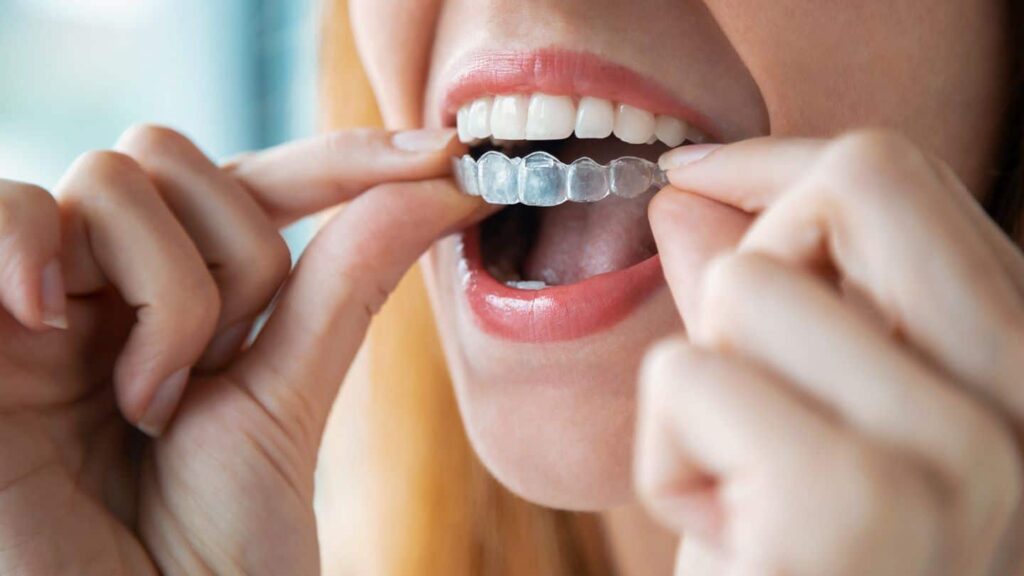Invisalign aligners have revolutionized the way we straighten teeth, offering a discreet and comfortable alternative to traditional braces. However, achieving that perfect smile doesn’t end when you leave the orthodontist’s office. Proper aftercare is essential to ensure the best results and maintain oral health. In this comprehensive guide, we’ll explore everything you need to know about Invisalign aftercare, especially for children’s dental care in the UK.
Introduction to Invisalign Aftercare
Invisalign aligners are a popular choice for both adults and children looking to straighten their teeth without the hassle of metal braces. These clear, custom-made aligners are almost invisible and can be removed when eating or brushing your teeth. But what happens after you get your aligners? How do you take care of them and ensure your treatment is successful? Let’s dive into the world of Invisalign aftercare and discover the steps you need to follow.
Why Aftercare is Important
Aftercare is a crucial part of the Invisalign treatment process. Think of it like maintaining a new car – if you don’t take care of it, it won’t perform as well or last as long. Proper aftercare ensures that your aligners stay clean and functional, your teeth and gums remain healthy, and your treatment stays on track.
Cleaning Your Invisalign Aligners
Keeping your aligners clean is one of the most important aspects of aftercare. Here’s a simple guide to ensure your aligners stay sparkling clean:
- Rinse Them Regularly: Every time you remove your aligners, give them a quick rinse to wash away saliva and debris.
- Brush and Soak Daily: Use a soft-bristled toothbrush and clear, anti-bacterial soap to gently brush your aligners every day. Avoid using toothpaste as it can be abrasive. Additionally, soak your aligners in a specialized cleaning solution or a mixture of water and vinegar to keep them fresh.
- Avoid Hot Water: Never use hot water to clean your aligners as it can warp the plastic and affect the fit.
The Dos and Don’ts of Eating and Drinking
One of the advantages of Invisalign is that you can remove the aligners when eating and drinking. However, there are some guidelines to follow:
Dos:
Remove Aligners Before Eating: Always take out your aligners before eating to prevent food particles from getting trapped and causing plaque buildup.
Drink Plenty of Water: Staying hydrated helps keep your mouth clean and healthy.
Don’ts:
- Avoid Sugary and Acidic Drinks: Beverages like soda and fruit juice can cause tooth decay and damage your aligners.
- Say No to Gum: Chewing gum can stick to your aligners and is difficult to remove.
Managing Discomfort and Pain
It’s common to experience some discomfort when you start wearing Invisalign aligners or switch to a new set. Here’s how to manage it:
- Over-the-Counter Pain Relief: Medications like ibuprofen or acetaminophen can help alleviate pain.
- Cold Compress: Applying a cold compress to the outside of your mouth can reduce swelling and discomfort.
- Soft Foods: Stick to soft foods for the first few days after changing aligners to minimize pressure on your teeth.
Maintaining Regular Dental Check-ups
Regular check-ups with your orthodontist are essential to monitor your progress and make any necessary adjustments. Here’s why they’re important:
- Track Progress: Ensure your teeth are moving as planned.
- Receive New Aligners: Get your next set of aligners and check their fit.
- Address Concerns: Discuss any issues or discomfort you’re experiencing.
Special Considerations for Children
- Children’s dental care in the UK with Invisalign requires a few additional considerations to ensure successful treatment:
- Supervision: Ensure children properly clean their aligners and wear them for the recommended 20-22 hours per day.
- Education: Teach children the importance of maintaining their aligners and oral hygiene.
- Routine: Help establish a consistent routine for removing, cleaning, and storing aligners.
Invisalign and Oral Hygiene
Maintaining oral hygiene is crucial during Invisalign treatment. Here are some tips:
- Brush and Floss Regularly: Brush at least twice a day and floss daily to prevent cavities and gum disease.
- Clean Aligners and Teeth Separately: Ensure both your aligners and teeth are clean before reinserting the aligners.
- Use Mouthwash: An anti-bacterial mouthwash can help keep your mouth fresh and reduce the risk of infections.
Dealing with Lost or Damaged Aligners
Accidents happen, and sometimes aligners get lost or damaged. Here’s what to do:
- Contact Your Orthodontist: Inform your orthodontist immediately to get a replacement.
- Use the Previous Set: If a replacement isn’t immediately available, wear the previous set of aligners to maintain progress.
- Be Prepared: Keep an emergency kit with a spare case and aligner cleaner when traveling.
Long-term Care and Retention
After completing your Invisalign treatment, long-term care is necessary to maintain your new smile:
- Wear Retainers: Retainers help keep your teeth in their new position. Follow your orthodontist’s instructions on wearing them.
- Regular Check-ups: Continue regular dental visits to monitor your teeth and gums.
- Good Oral Hygiene: Maintain a routine of brushing, flossing, and using mouthwash.
Conclusion
Invisalign aftercare is a vital part of the journey to a beautiful, healthy smile. By following the guidelines for cleaning, eating, managing discomfort, and maintaining regular check-ups, you can ensure the best results from your Invisalign treatment. Special considerations for children’s dental care in the UK further emphasize the importance of supervision and education. With proper aftercare, your Invisalign experience will be smooth and successful, leading to a confident smile that lasts a lifetime.







